How to Choose Fish for Sushi and Rolls
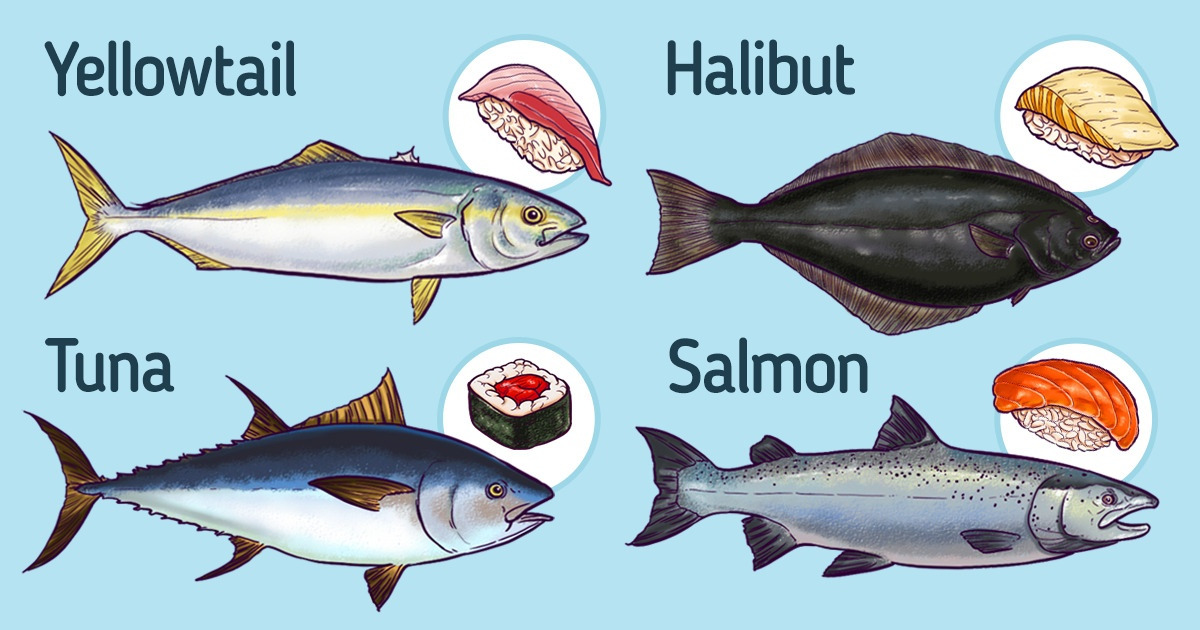
Sushi is eaten around the entire world. Many people that love eating sushi don’t only go to cafes and restaurants, but they also cook sushi at home. It’s made from rice and fish, and to make it really tasty, the ingredients should be of very high quality.
5-Minute Crafts is going to tell you how to choose fish for sushi and rolls.
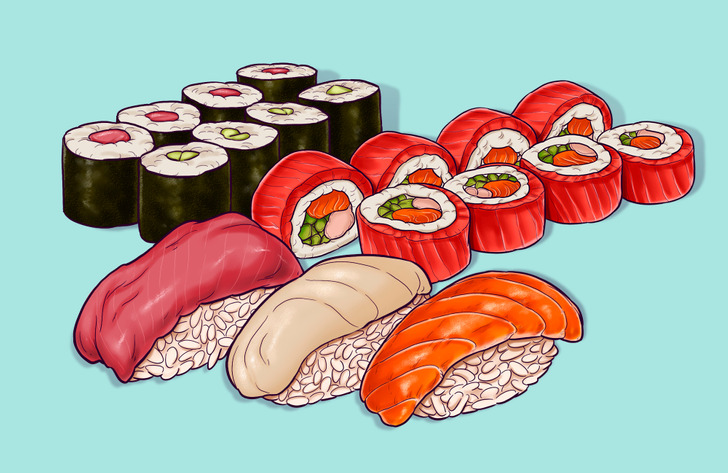
Sushi is a Japanese meal made from rice and fish or seafood. People mostly use raw fish but for some kinds of sushi, it’s cooked. There are 2 main types of sushi:
- Nigiri
- Maki
Nigiri

Nigiri sushi is just sushi. It’s an oval piece of rice covered with a piece of fish or seafood. The fish can be raw, fermented, or cooked. For example, shrimp and eel are cooked, but tuna, salmon, and yellowtail are fresh.
Nigiri sushi should be eaten by hand, not chopsticks. It’s served with soy sauce. But not everyone knows how to dip the fish into the sauce. The sushi needs to be turned so that the fish gets soaked, not the rice.
Rolls or maki sushi
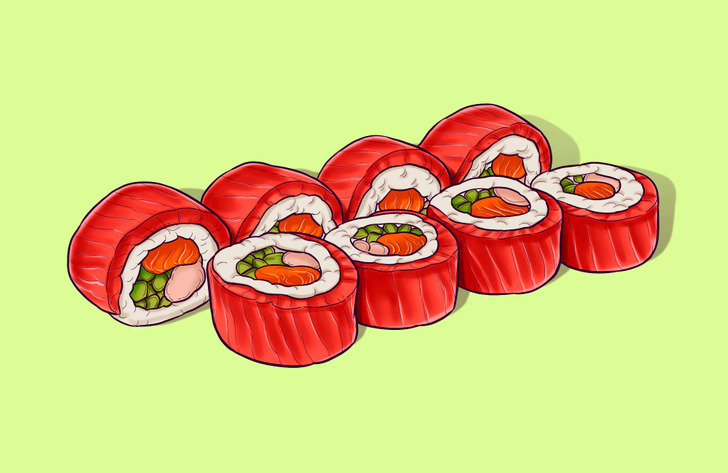
Maki sushi is a kind of sushi where rice and fish are wrapped in a sheet of seaweed, nori. There are several kinds of maki.
- Hosomaki is a very thin roll of sushi that is about 1 inch around. Hosomaki is made with nori (seaweed paper), rice, and a single ingredient, which can be meat or a vegetable.
- Chumaki is usually 1 1/2 inches around and contains 2 or 3 different ingredients instead of just 1 as seen in the hosomaki.
- Futomaki is the largest of the maki rolls and can include 4 or more ingredients, not including the rice and nori.
- Uramaki is when the sushi roll is turned “inside out,” with the rice as the outer layer and the nori on the inside, wrapping the ingredients.
- Temaki is also known as a “hand roll” and looks like an ice cream cone.
Like nigiri, maki is best eaten with the hands.
Types of fish that are best for sushi
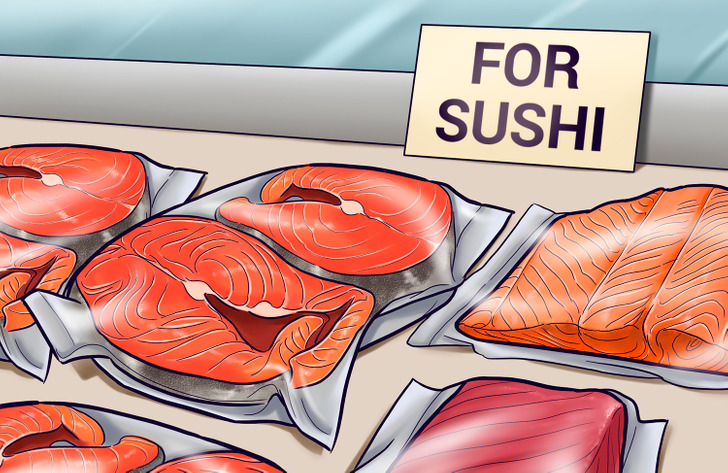
There is no special kind of fish for sushi. You can see stickers on food that say “for sushi” or “for sashimi.” It just means the quality of the fish is good and it can be eaten raw. Some fish is marked “for raw consumption.”
Seafish contain fewer parasites than freshwater fish. This is why it’s better to use this kind.
This is what people do with fish to eat it raw after it’s caught:
- Bleed it. It’s done by slicing it near the tail, all the way to the backbone.
- Gut it. Most worms that are found in fish once lived in the animal’s guts, then migrated to the flesh after the fish died. Fast gutting prevents this in most cases.
- Freeze it. It should be done right on the boat after gutting.
Fish for raw consumption
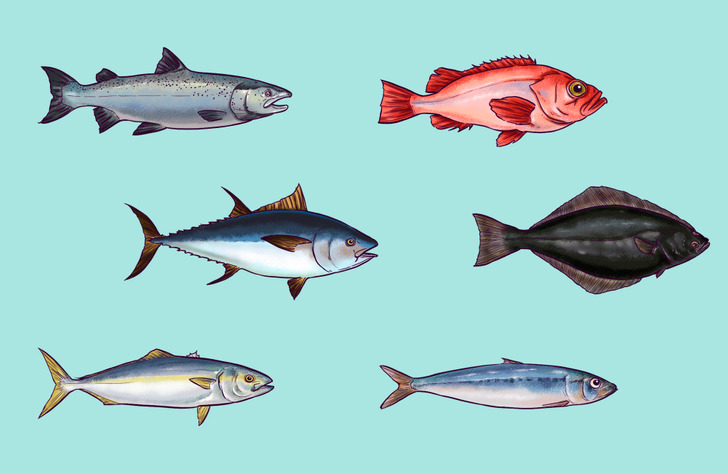
It’s recommended to use sea fish to make sushi.
- Salmon is probably one of the most popular kinds of fish for sushi. It’s the best choice for beginner chefs. The salmon you’re going to eat raw should be farm-grown. In wild nature, salmon often contains parasites.
- Tuna is great for sushi. It contains a lot of protein and good fat. You can choose bluefin, yellowfin, bigeye, skipjack, bonito, and albacore tuna. It’s resilient to parasites, so it’s one of the few kinds of fish that are safe to be eaten raw.
- Yellowtail contains a lot of fat and is very popular among sushi chefs. It’s used for sushi and rolls both fresh and cooked. It’s called “hamachi” in Japanese.
- Mackerel (saba) has a potent fishy flavor. The Japanese like the taste of this fish but others might not find it very attractive. Before serving, mackerel is cured with vinegar.
- Rockfish are also cured in vinegar.
- Halibut is not a very fatty fish that contains omega-3. Sushi chefs love it for its rich taste.
- Iwashi are often used to cook sushi in Japan. This fish has quite fatty meat that goes bad quickly. This is why it’s rarely served fresh. Iwashi can be salted to remove the water from it or marinated in vinegar to store it and make it sour.
To eat fish raw, it’s better to choose farm-grown fish. Freshwater fish shouldn’t be eaten raw because they contain parasites.
How to choose fish for sushi
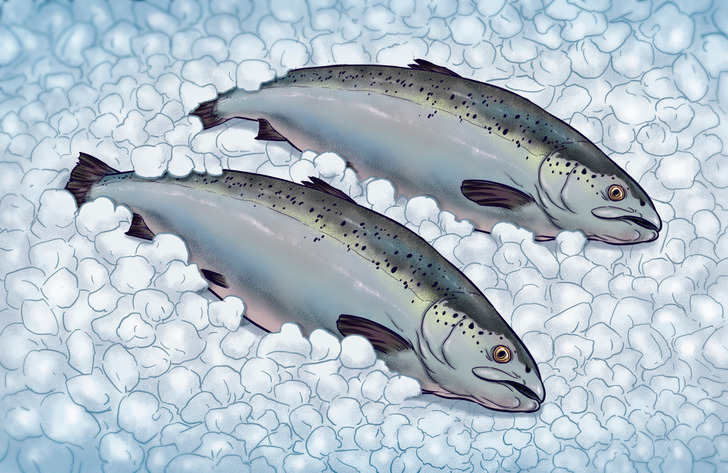
- Buy fish in good stores with a good reputation. Don’t buy fish in any supermarket you see. Be serious about it.
- Look at what the counter looks like. The fish should be in aluminum boxes with enough ice. The whole fish should be partly embedded in the ice, and the fillet should be stored on top of the ice. Different pieces shouldn’t be in contact with each other.
- Pay attention to the smell. The place where you’re buying fish should have a fresh sea smell.
- If you are buying a fillet, choose the kind that is marked that it can be eaten raw. Or buy a whole fish and gut it yourself.
- Make sure it’s fresh by noting the following:
- The smell of fresh fish
- Bulging shiny eyes
- Red gills
- Solid flesh
- Find out where the fish is from. It should be farm-grown.
- Ask the seller if the fish was frozen. It’s necessary to get rid of the parasites.
- Keep the fish in the cold. Ask the seller to pack some ice.
- If you bought a whole fish but you’re not sure the seller was honest in terms of sanitary rules, gut the fish yourself.
- While gutting, wash the body from all the insides.
- Keep the hands, table, cutting board, and other tools perfectly clean.
- Gut the fish and check if it has parasites. You can cut the fillet into thin slices and take a good look. If you are not sure, put the pieces, in turns, on a clean glass plate and shine a bright light on them.